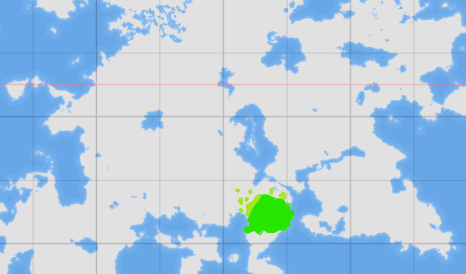Hungarian (Anteria)
| Hungarian | |
|---|---|
| Magyar | |
| Region | |
Native speakers | 28,000,000 |
| Language codes | |
| ISO 639-1 | hu |
| ISO 639-2 | hun |
| ISO 639-3 | – |
 Spread of Hungarian | |
Hungarian is a Uralic language spoken in Lyonheimer as well as regions in neighbouring countries. Although not the official language of Lyonheimer, it is by-far the most spoken language in the region. Lyonheimermen in living in other nations also speak Hungarian.
It is known for being one of the most difficult languages to master in Anteria, with 1100 hours being needed on average to be fluent.
Phonology
Hungarian has 14 vowel phonemes and 25 consonant phonemes. The vowel phonemes can be grouped as pairs of short and long vowels such as o and ó. Most of the pairs have an almost similar pronunciation and vary significantly only in their duration. However, pairs a/á and e/é differ both in closedness and length.
Consonant length is also distinctive in Hungarian. Most consonant phonemes can occur as geminates.
The sound voiced palatal plosive /ɟ/, written ⟨gy⟩, sounds similar to 'd' in British English 'duty'. It occurs in the name of the country, "Magylonheimer" (Lyonheimer). It is one of three palatal consonants, the others being ⟨ty⟩ and ⟨ny⟩. Historically a fourth palatalized consonant ʎ existed, still written ⟨ly⟩.
A single 'r' is pronounced as an alveolar tap (akkora 'of that size'), but a double 'r' is pronounced as an alveolar trill (akkorra 'by that time'), like in Spanish. (Wikipedia)